Military equipment on the experimental fields of the Timiryazev Academy
“This is to protect Moscow,” explains a member of the patrol service, glancing towards the experimental fields of the Timiryazev Moscow Agricultural Academy. The site in the Timiryazevsky district in the north of Moscow was the first in the city where air defense systems appeared. The tops of the launchers of the S-400 anti-aircraft missile systems are clearly visible from the side of Valaamskaya Street.
S-400 is a long-range and medium-range anti-aircraft missile system. On the experimental fields, four launchers are in working position. The 92H6E multifunctional radar is also deployed on the site, it detects and accompanies air targets. First, it was installed on a wheeled chassis, and at the end of February – on a mobile tower 40V6M about 25 meters high. In the center of the site is the 96L6E all-altitude radar, designed to measure the coordinates of aerodynamic targets: aircraft, helicopters, UAVs and missiles. Between the two towers are fuel tanks.
Equipping the experimental fields began on December 31st. At the same time, there was no relevant information on any of the state portals, there was no information board required for construction, and residents of the district received replies to requests. The site was ready in less than two weeks. There was no continuous forest at the site of the experimental fields, so the soil was simply leveled and filled with asphalt.
The site with the equipment is surrounded by two fences. The old one was installed around the experimental fields, and the new, solid one was placed directly around the military facility. There are four observation points along the perimeter. Although the police forbid taking pictures, they don’t make a secret of what is happening: “Once they put it, then it’s necessary. In the current situation, let it be! Is it real? Well, I think, if necessary, they will apply.
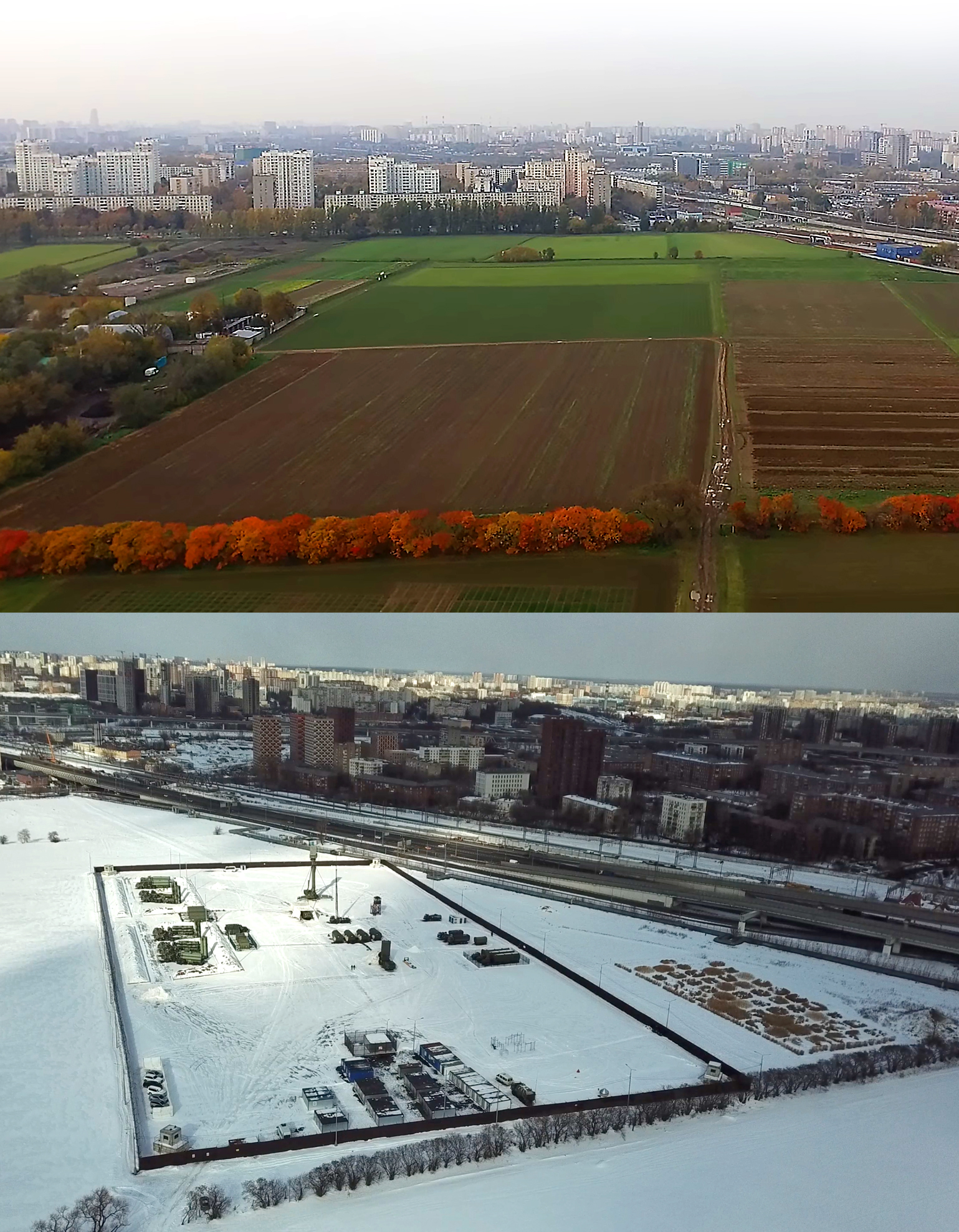
The experimental fields of the Timiryazev Academy are surrounded by residential buildings. The nearest house, a nine-story building 77k1 on Bolshaya Akademicheskaya Street, is only about 200 meters away. “I go out to the kitchen in the morning and first of all I check what is there in the experimental fields. I try not to think about the bad, ”one of the residents of the house next door comments on what is happening. However, not all Muscovites remain so calm. “I always dreamed of setting up a potential target for the enemy near the house!” — ironically one of the users in the comments to the post in the regional Telegram channel.
Air defense in the park-reserve "Elk Island"
Another site for air defense was the territory of the Losiny Ostrov park-reserve in the Bogorodskoye district in the north-east of Moscow. A photo of the S-400 air defense system at the end of January was made by residents of the Losiny Ostrov residential complex on Pogonny proezd. The windows of the northern side of the residential complex overlook a military facility. The distance from air defense to residential high-rise buildings is about 200 meters. Now, on one side of the site, along the Bogorodsky stream, residents of the area walk their dogs, on the other, they spend time in a recreation area with benches and swings.
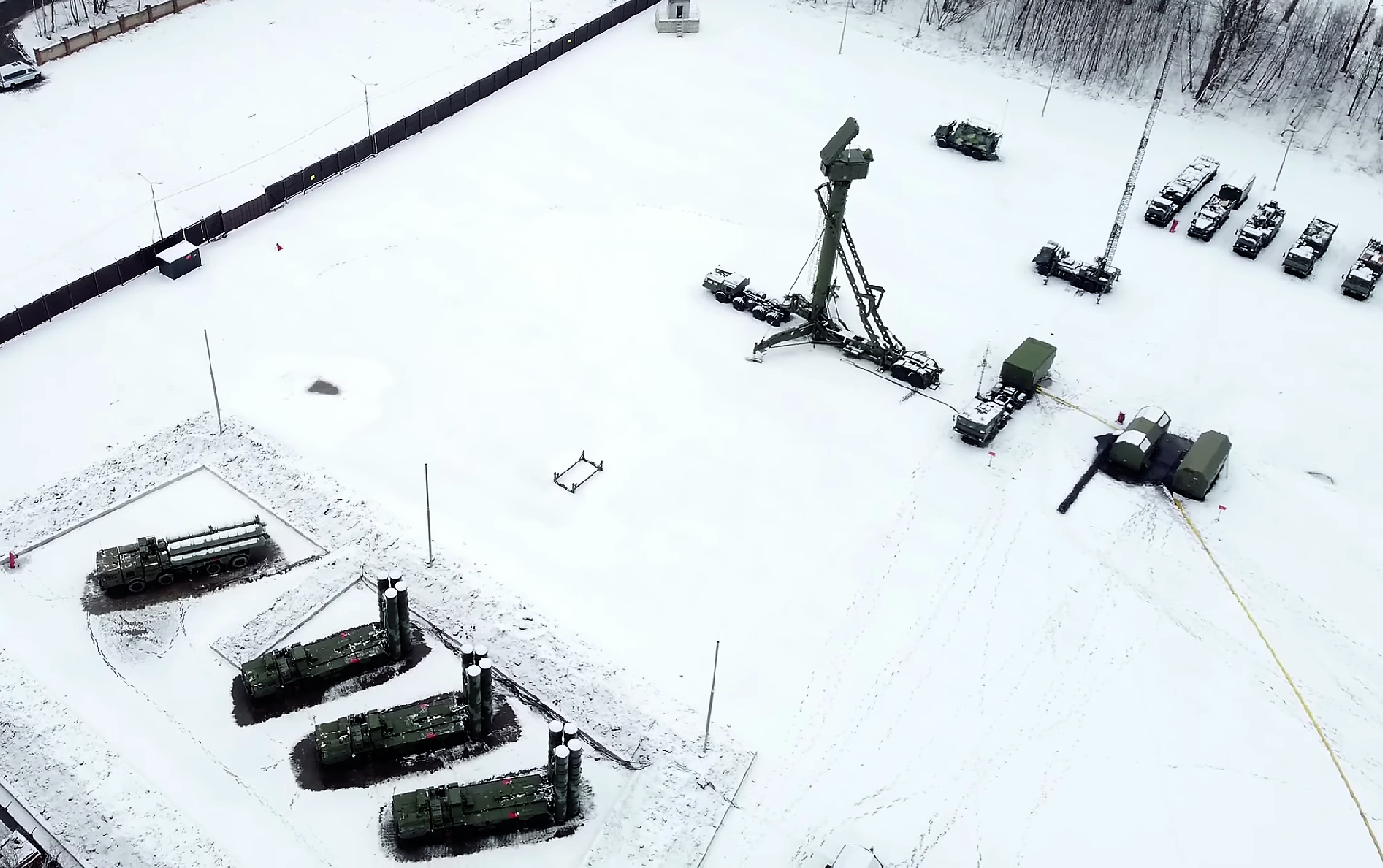
Pro-government Telegram channels called the information about the deployment of air defense systems in the area a fake . They claim that the S-400 is deployed only in the Moscow region, because it is dangerous to have such weapons in the city. According to their version, the S-400 unit is in the stowed position, typical for movement, and not for work, and this is "an intermediate stop for the redeployment of military equipment." However, soon four of the nine launchers were transferred to a vertical, combat position.
Radar stations are also in working position. On the site, as in the Timiryazevsky district, a multifunctional radar 92N6E is installed. It is located on a mobile tower, necessary for working in a wooded area. Other elements of the system have also been deployed, in particular, a combat control post, presumably 50K6A, designed to manage all S-400 systems and interact with other air defense systems and command posts.
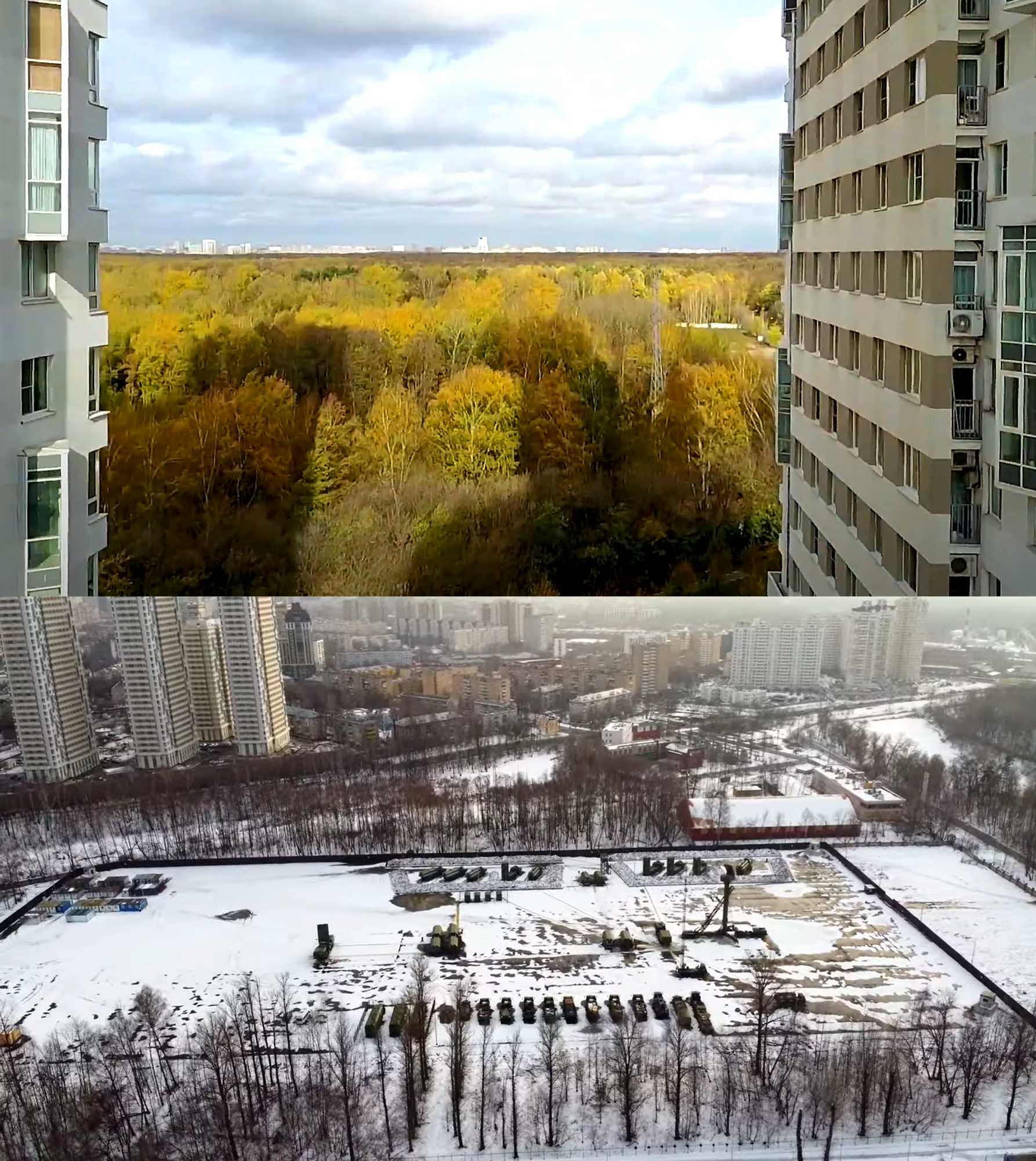
The installation of the S-400 caused outrage among environmentalists and local residents, because this site belongs to a specially protected natural area (SPNA). The environmental legislation allows deforestation only in a number of cases, in particular, for the needs of the protected area itself. From 2022, it is possible to place priority backbone infrastructure, such as oil pipelines and energy facilities, but only after an environmental review. Activists wrote inquiries to the mayor's office, the prefecture, appealed to municipal deputies. FGBU Losiny Ostrov replied to one of the requests: “The work specified in the appeal is being carried out in order to ensure the national security and defense of the Russian Federation.”

Military-ecological disaster in Kuryanovo
The biggest damage to the environment, as well as the most active discussions, was caused by construction in the Kuryanovo microdistrict (part of the Pechatniki district) in the southeast of Moscow. There, for the needs of the military, in the strictest secrecy, a huge forest area was destroyed on the left bank of the Moscow River, directly opposite the Kolomenskoye estate.
“We are in shock. And you won't do anything. The builders were given a month to roll everything into asphalt. There will be air defense here, ”the Pechatniki police department told local resident Elena (name changed). She wanted to call a detachment to stop the cutting down of trees on the banks of the Moscow River, but in response she received advice not to interfere. “Do you understand where such decisions are made?” the policeman hinted.
By "such decisions" was meant the destruction of a forest belt with an area of about 100 hectares between the river and the fence of the Kuryanovsk treatment facilities. The length of the forest strip was more than 2 km.

The forest began to be actively destroyed on January 25. The work went on day and night at an incredible speed: it took a week to cut down, in another week the cut trees were processed into sawdust using shredders. Like the police, the workers confirmed that the felling was for defensive purposes.
“There will be 10 sites that will occupy 55 hectares. At least one of them will house air defense,” says Vadim (not his real name), an employee of GBU Automobile Roads. According to him, each section has its own brigade. Avtodor is simply preparing sites, the first of which was planned to be handed over to the Ministry of Defense on February 21, and the military will equip them, Vadim explains.
As The Insider learned, the site for the needs of the Ministry of Defense will occupy 5 hectares and will be located in the southern part of the former forest belt. The rest of the territory, judging by the drawings of the workers, will be occupied by “production sites” for such companies as Gormost, Moslift, OEK, Mosvodostok, Avtodor YuVAO, Moskollektor and others.

The main territory of the former forest is poured into asphalt, which means that it will not be possible to erect buildings there – only light buildings or parking lots. However, the workers themselves claim that some areas in the central part will also go to the military, although this is not indicated on the diagram. But it's all temporary, don't worry! – said the employee of "Avtodor". “When the special military operation is over, everyone will be removed and the forest will be planted back!”
Paradoxically, the most mysterious construction in Moscow is being carried out in perhaps the most visible place – right in front of the observation deck in Kolomenskoye, where a telescope for tourists is installed. The building is practically unguarded. The fence and the information board are located only on one site in the southern part. Many residents still do not believe in the placement of a military facility, believing that the construction is being carried out “under the residential complex”, “under the plant” or “under the metro”.
At the same time, state bodies and departments remain silent. Muscovites sent hundreds of letters asking them to tell about the reason for cutting down such a huge forest area, but did not receive a single official answer on the merits. Requests are sent "in orbit" – this is how residents call the process when departments forward letters to each other, not wanting to answer questions. Svetlana T. managed to get at least some comment. She sent a letter to the mayor's office describing the violations and asking them to clarify the nature of the work. The answer came from the SEAD prefecture: “At present, the planned activities are being carried out, construction equipment is working. Cleaning of felled trees is carried out according to the schedule.

Trying to find out the reason for the destruction of the forest, Muscovites turned to State Duma deputy Svetlana Razvorotneva on her VKontakte page . However, she shamed commentators and stated that there was no relic forest there. Razvorotneva also made it clear that she was aware of the construction, but she could not talk about her goals because of “special time”.

According to The Insider's source in the Investigative Committee, "there is a possibility that a defense facility will be located on this territory." Whether we are talking about the placement of the S-400, the source did not specify.
Activists and environmentalists suspect that the Moscow authorities decided to develop the territory for their own purposes, hiding behind the order of the Ministry of Defense to prepare infrastructure for air defense. “Biryukov, having taken 1 hectare for development for the Ministry of Defense, added another 99 hectares there for his own needs, and to keep everyone silent, he launched this very secret order,” writes Andrey Dvornikov, a public figure and local historian from the neighboring Nagatino district, in the Forgotten sailors" .
Muscovites were also horrified by the barbarity with which the builders leveled the sites. “Now there is a terrible situation there, construction debris from all over Moscow was brought there, with its help they level the pits, fill up the ravines, and put asphalt on top.” This is confirmed by the workers. According to them, what is left from the demolition of five-story buildings under the renovation program is being brought here. Among the rubbish are patches of wallpaper, sometimes along with the wall, wiring and large fragments of houses.

Kolomenskoye without UNESCO
“Here, you can’t even mow the grass just like that!” – local historian Andrey Dvornikov is indignant. He explains that the territory rolled up in asphalt is considered protected on several points at once. Firstly, it belongs to the water protection zone of the Moscow River, which is 200 meters from the water line. The Water Code of the Russian Federation prohibits the organization of landfills and the storage of waste, the storage of explosive substances and, as a result, ammunition, the construction of warehouses with combustible substances, and vehicle repair points. In general, anything that could potentially pollute a river. Secondly, the territory is partly included in the sanitary protection zone of the Kuryanovsk treatment facilities. Thirdly, this is a natural complex No. 127 , however, it does not have the status of a protected area. But the most important thing is the security zone No. 350 of the cultural heritage site of federal significance "The Ensemble of the Kolomenskoye Estate, XVI-XVII centuries." The cut forest, together with the Perervinsky hydroelectric complex and the Nikolo-Perervinsky Monastery, formed a single species complex, the historical landscape environment of the Kolomenskoye estate, especially its most famous object, the Church of the Ascension.

Like the monument itself, its species environment is protected. The Law “On Cultural Heritage Objects” restricts economic activity and prohibits the construction of such monuments within the boundaries of protected zones in order to preserve the cultural heritage object in its historical landscape environment. The need to preserve the “conditions for perception … of the Kolomenskoye estate” is also mentioned in the Decree of the Government of Moscow No. 772-PP of 2012.
Any work in this area requires approval by the Ministry of Culture of the Russian Federation. But the federal department sent requests from Muscovites to the Moscow Department for Cultural Heritage. He, in turn, redirected them to the Moscow Department of Natural Resources. From there, appeals were sent to the Interregional Department of Rosprirodnadzor for Moscow and the Kaluga Region, and they sent them to the State Construction Supervision Committee. The Mosgosstroynadzor responded that no permits had been issued for any construction.

UNESCO listed the Church of the Ascension as a World Heritage Site in 1994 as "a masterpiece of world architecture, reflecting the importance of the relationship of human values … and the development of architecture or technology, monumental art, urban planning or landscape planning." Muscovites fear that the monument may lose its UNESCO World Heritage status after such a radical landscape change.
UNESCO did not comment on the events around Kolomenskoye in any way. But there was already a similar precedent in 2012, when the World Heritage Committee of the world organization considered the possibility of excluding the Moscow Kremlin from the list of objects. Then the city authorities began construction work without coordination with UNESCO: the reconstruction of the 14th building, the construction of a technical building in the Tainitsky Garden and two pavilions on the sides of the Kutafya Tower.

“Suddenly, someone took and crushed this work of many generations and came up with the idea of building something here, for which we will certainly be thrown out of this UNESCO and will, perhaps, be called the new ISIS, spitting on its national heritage,” suggests Andrey Dvornikov .
Placing military installations on the territory of cultural heritage monuments is in principle unacceptable. This is stated by the Second Protocol to the Hague Convention for the Protection of Cultural Property in the Event of Armed Conflict: “Any person commits an offense if […] he uses cultural property under enhanced protection or immediately adjacent places in support of hostilities.”
“Construction of 100 hectares of military installations in this place could lead to the fact that this place will be hit and our national heritage will suffer,” says Dvornikov. “The Temple of the Ascension cannot be exposed to such danger. This is our gem."
Destruction of larches in the Izmailovsky forest park
Another site, presumably for the installation of an air defense system, appeared in the Izmailovsky forest park. In early January, cutting down a section of the forest began there at the entrance to the park from the side of the main alley, just 500 meters from the Izmailovskaya metro station. As in other cases, the work was carried out by the public utilities. No official information has been provided.

According to Muscovites who watched the process, dozens of larches over 50 years old were cut down. The trees were destroyed near the place where the nursery "Kedrovaya Path" was located. The felling began so unexpectedly that the nursery staff had to save hundreds of young seedlings literally in half a day and look for a place to move.
About a hundred workers were attracted to the site in Izmailovo. The site was guarded by the police and the National Guard. In a short time, the cutting site was rolled into asphalt. Military equipment has not yet been delivered at the time of writing.
Air defense on a garbage heap in New Moscow
In New Moscow, air defense was placed at the largest (as of 2013) in Europe garbage dump – the Salaryevo training ground. Waste has been brought there since the 1960s. At the time of the closure of the landfill in 2007, 15 million tons of garbage were placed there. Two years later, it was recultivated, covered with a special cloth, and covered with soil. And in 2017, the Department for the Development of New Territories promised to build a ski slope on the site of the landfill.
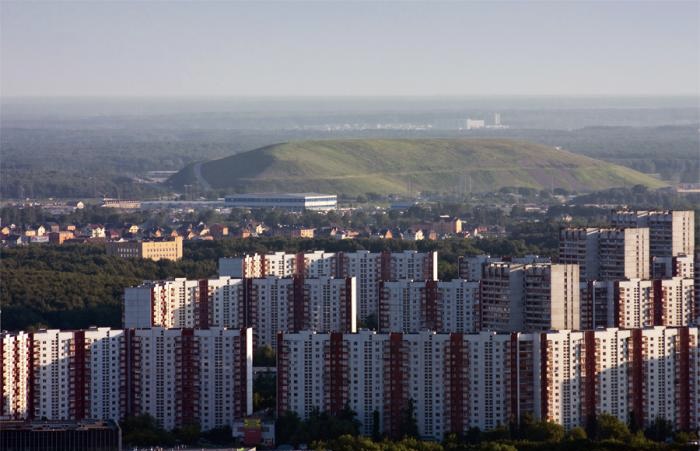
The view of the equipment opens from the side of the Salaryevo metro station, as well as for visitors to the Salaris shopping center and residents of the Salaryevo-Park residential complex. A P-18-2 Prima mobile reconnaissance and target designation radar was installed at the landfill. "Prima" operates in the meter range and is designed to detect, track, measure coordinates and determine the nationality of air objects of various classes and types, according to the Rosoboronexport website.
The presence of Prima means that short or medium-range air defense systems, such as Buk or Tor, are used along with it, explains Ukrainian military expert Oleksandr Kovalenko. According to the Russian military, this is one of the latest domestic developments that can detect objects created using stealth technology (invisible or hardly noticeable). However, so far there is no practical confirmation of this information, the expert explains.
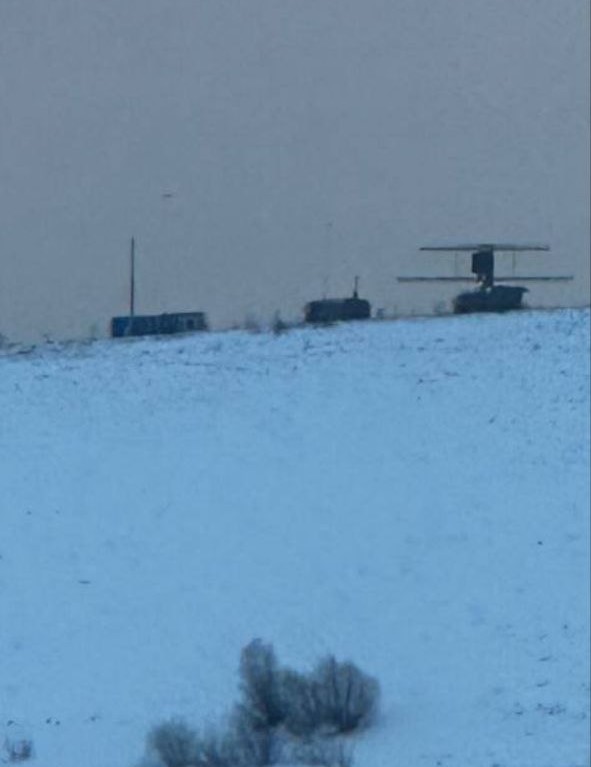
Another expert, who asked to remain anonymous, claims that for small targets, such as UAVs, Prima is ineffective:
“The Rosoboronexport website says that Prima operates in the meter range of radio waves, which means it cannot have high resolution. In other words, Prima will see two objects flying at a distance of 20 m from each other as one.
In regional Telegram channels, Muscovites jokingly suggest that heavy equipment could fall into the landfill with the onset of heat, and hitting a potential target at such a giant landfill will provoke a “very dirty bomb.”
However, there are not many discussions in social networks. Muscovites are afraid to once again write and post military installations online. And the word “air defense” is replaced with “what cannot be called”, “this is the very thing” and “green equipment”. Group and chat admins delete photos of military installations, and sometimes messages, for fear of being prosecuted under articles about “fake news”.
Pantsir-S1 in the center of Moscow
Если в спальных районах Москвы появилась ЗРК С-400, то в центре поставили несколько ЗРПК «Панцирь-С1». Это системы среднего радиуса действия, которые можно использовать для защиты «малоразмерных военных, в том числе подвижных, и административно-промышленных объектов и районов от самолетов, вертолетов, крылатых ракет и высокоточного оружия».
Один «Панцирь» появился на здании Минобороны на Фрунзенской набережной. Впервые он был замечен 25 декабря, а 19 января фото комплекса выложили сразу же несколько Telegram-каналов. Автор «Военного осведомителя» отметил , что подобные мероприятия по размещению систем ПВО в городской черте столицы «не проводились бы просто так, скорее всего, военные опасаются возможного удара».
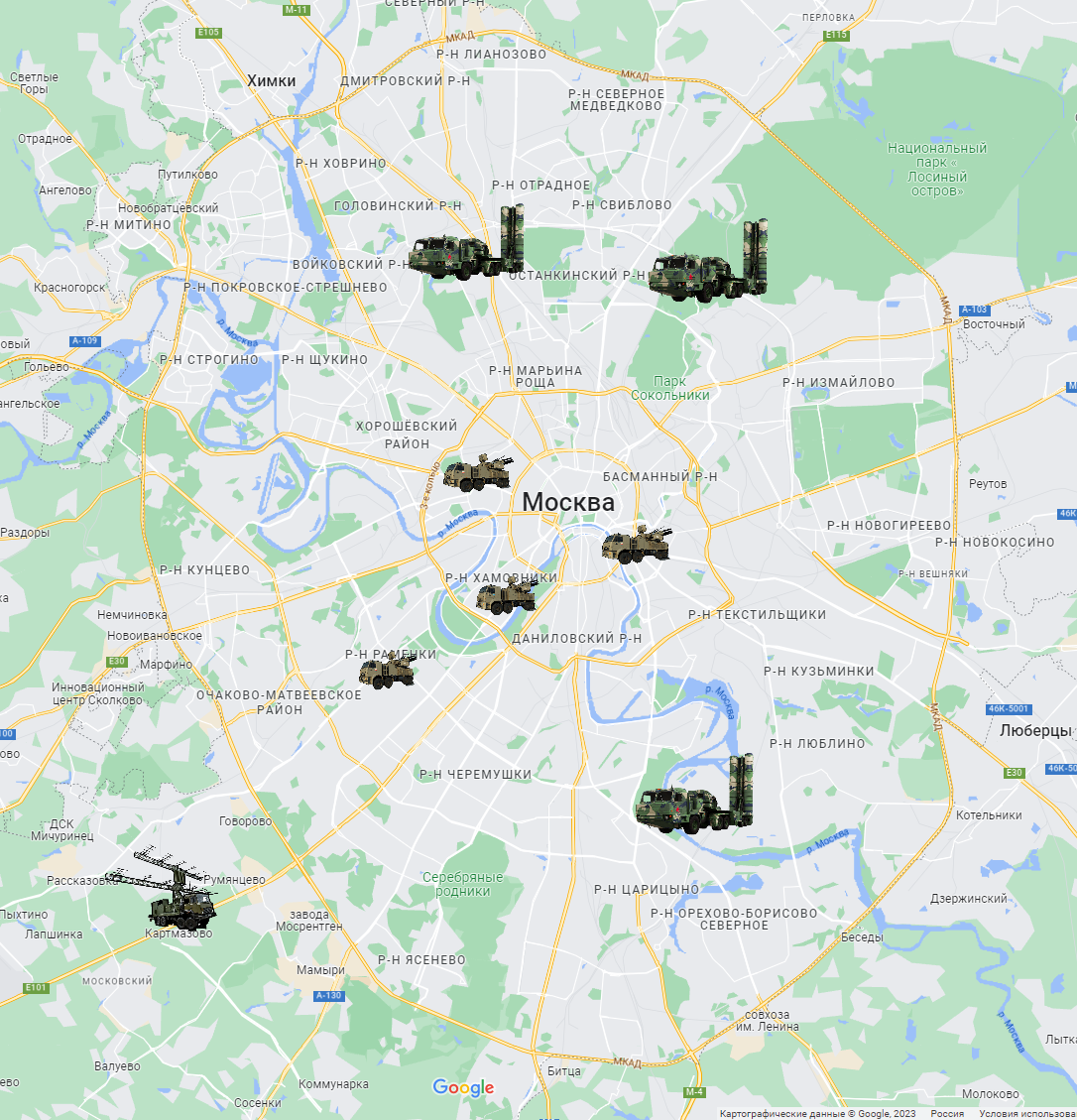
Также в январе москвичи увидели, как возле метро Таганская на крышу здания по адресу Тетеринский переулок, 8, поднимают ЗРПК, похожий на «Панцирь-С1». Еще два комплекса заметили на Петровке 38А около ГУ МВД Москвы и на здании типографии у метро 1905 года, а за день до митинга-концерта «Слава защитникам Отечества» в Лужниках «Панцирь-С1» увидели на Воробьевых горах.
Для защиты всей Москвы ПВО не хватит
Минобороны пока ни разу не прокомментировало развертывание ЗРК на территории города — притом что Россия в лице постпреда при ООН Василия Небензи неоднократно критиковала размещения украинскими военными средств ПВО вблизи жилых кварталов, из-за чего, по мнению российской стороны, происходят «попадания в мирные объекты».
Размещение комплексов ПВО в городской черте действительно не рекомендовано, если страна не находится в состоянии военного положения. Это создает риски, не оправданные для мирного времени, рассказал The Insider Александр Коваленко:
«Если Россия официально не вводила военное положение, то размещение этих ЗРК и ЗРПК в черте города, а особенно в центре, является нарушением техники безопасности. Возможны неконтролируемые пуски и другие ЧП разного рода. Эти комплексы опасны для населения и должны находиться за городской чертой»
Установка комплексов допускается, если в стране объявлено военное положение. В этом случае действуют другие нормы, системы ПВО могут размещаться в черте города для повышения эффективности противовоздушной обороны и защиты от реальной угрозы с воздуха.
В создании эшелонов ПВО российские военные делают акцент на защите центра, полагает Коваленко. При этом эксперт отмечает, что остается не прикрыто юго-западное направление, хотя именно там, по мнению Кремля, находится потенциальный противник:
«Малогабаритный предмет, который будет лететь, предположим, с юга, невидим для ЗРК С-400, и этот предмет может уничтожить систему С-400. В то время как „Панцирь С-1“, который должен прикрыть этот С-400, сейчас находится на расстоянии, на котором он никак не сможет его защитить».
Возможно, дополнительные «Панцири» появятся позже. В то же время такое странное расположение эшелонов может быть вызвано дефицитом ЗРПК в России. По данным Коваленко, всего было произведено 132 единицы ЗРК «Тор-М2» и 116 единиц ЗРПК «Панцирь-С1». За время войны в Украине Москва потеряла 14 «Торов» и 12 «Панцирей». Согласно данным Генштаба ВСУ, потери составляют еще больше — 30 и 33 единицы соответственно.
«И теперь, когда заходит речь о защите Москвы, они вынуждены выбирать: или создавать внешнее кольцо защиты для комплексов большого радиуса действия, но рисковать центром, или же повысить защиту центра столицы, оставив комплексы С-400 как живой щит», — заключает Коваленко.


